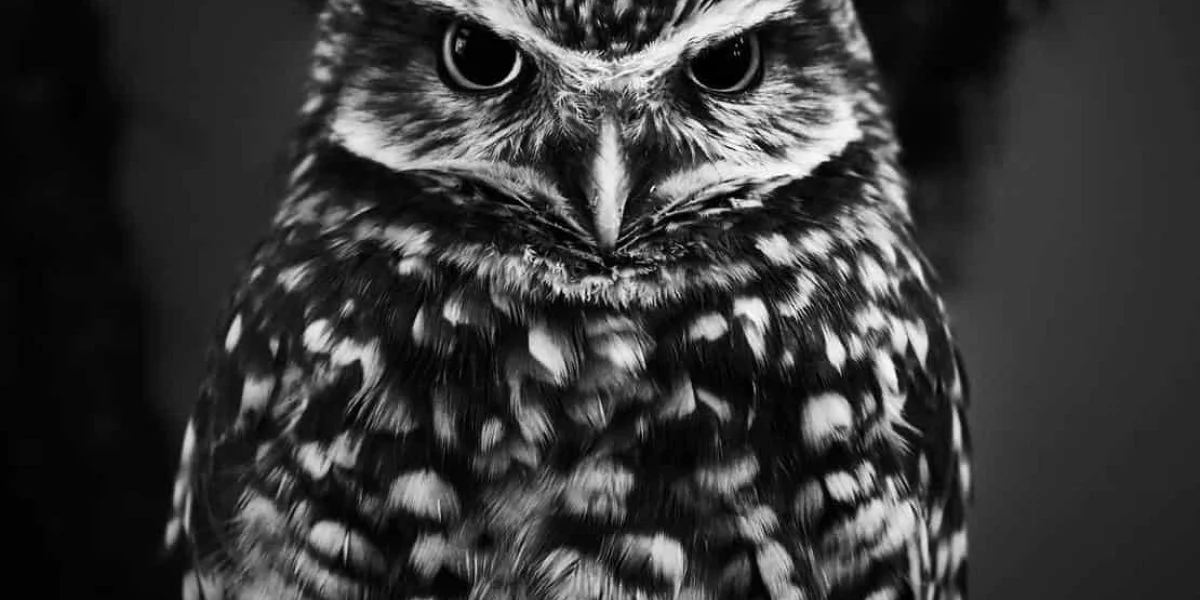
Want to learn more? This National Geographic Book on Owls is a great read!
The Great Horned Owl is the most commonly seen of these species in the states and there have been reports of other owl species, but the data is sensitive and may be the result of human error or misidentification.
Maryland is a Mid-Atlantic state with a continental climate which means that it has hot summers with humid air and cool winters.
The state parks system in Maryland classifies 53 different areas as state parks whilst there are 8 different National parks across the state.
All of these National Parks are great spots for birdwatching and if you are lucky you may spot one of these owls in these areas.
Now that we’ve listed the species of owls that can be seen in Maryland and looked at the state a little, let’s have a look at the individual owl species in more detail.
Want to attract Owls to your yard? Take a look at our article!
What Owls can be seen in Maryland?
Table of Contents
1. Barn Owl
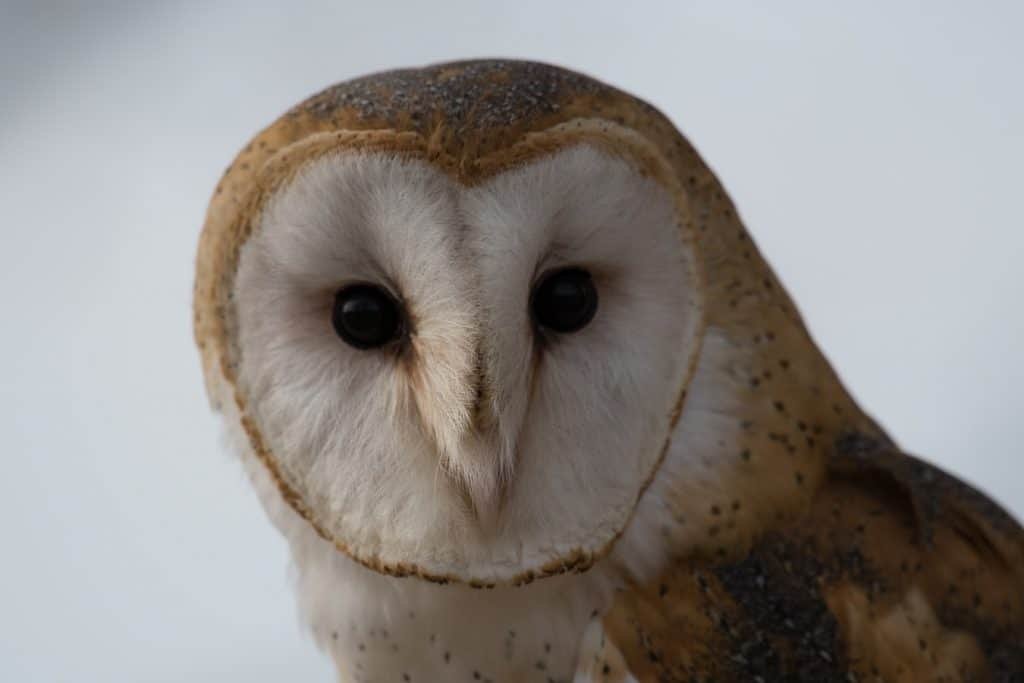
Wingspan
107 to 110 cm
Weight
430 – 620 g
Life Expectancy
Up to 4 years
Diet
Voles, Shrews & Mice
The Barn Owl is medium sized for an owl. Their head and wings are covered with buff and grey feathers.
However, in the night-time these feathers can appear to be completely white because of their pale colours.
These birds have a wide range going from southern Canada to across 48 states in the USA. Barn Owls most of these owls appear to mate for life and they remain monogamous to their partner.
Females will prepare the nests for egg incubation whilst the male will protect the nests and also bring her food.
Whilst these birds are territorial to other bird species, they will happily share hunting grounds with different Barn Owls.
You are most likely to see one of these birds hunting over open grasslands during the night.
With their large range it is not surprising that these owls can be seen in all areas of the state.
They are also permanent residents meaning they can be seen year-round.
The highest recorded number of sightings have been in the western half of the state but there have also been sightings throughout the eastern half as well.
2. Eastern Screech Owl
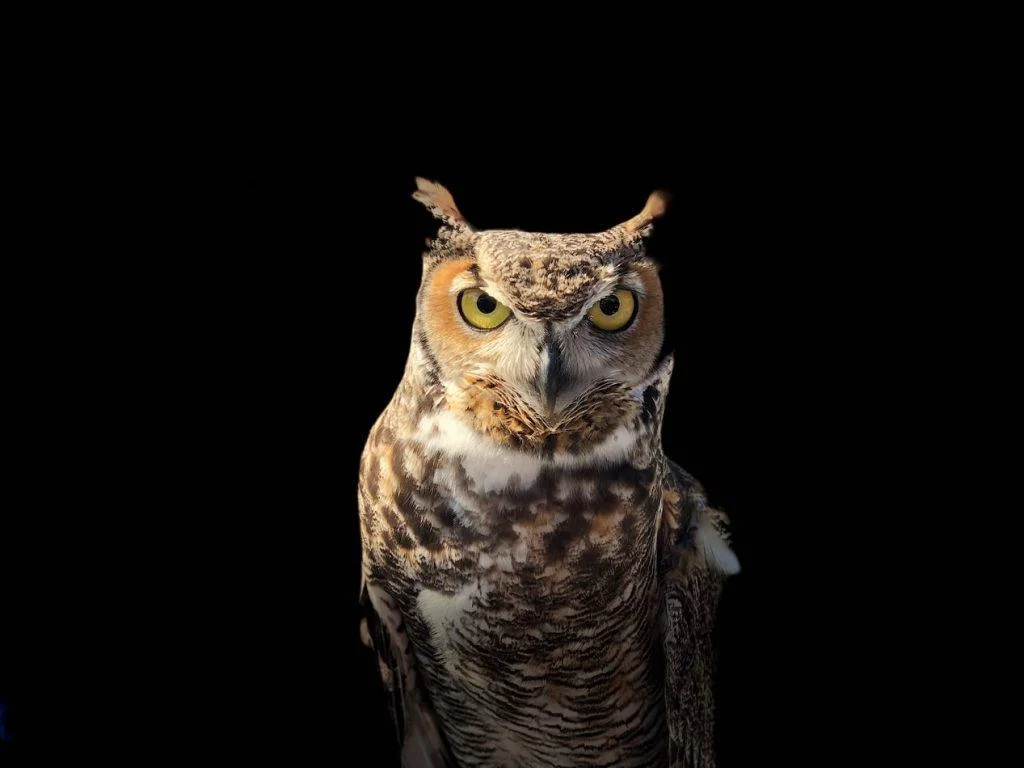
Wingspan
46 to 61 cm
Weight
160 g
Life Expectancy
14 years
Diet
Rats, Squirrels, Rabbits & Skunks
The Eastern Screech-Owl looks very similar to the Western Screech-Owl, with a small stocky body and varied grey feathers designed to camouflage them against trees.
Males will form a pairing with one individual to help them raise the brood, however, they do not remain monogamous to their partners and will mate with multiple individuals.
These pairings are also not a long-term thing and will change every year.
After mating, the females will stay in the nest and incubate the eggs whilst males spend most of their time defending their territory.
These birds have adapted well to suburban areas and have successfully bred in city parks and farmland.
They also appear happy to use manmade bird boxes, although they prefer to stay in dense forest areas.
Considering they are native to eastern states, they are found in all areas of the state and they are permanent year-round residents.
They are most active in their breeding seasons and the highest number of recorded sightings are to the south east of the state.
3. Great Horned Owl
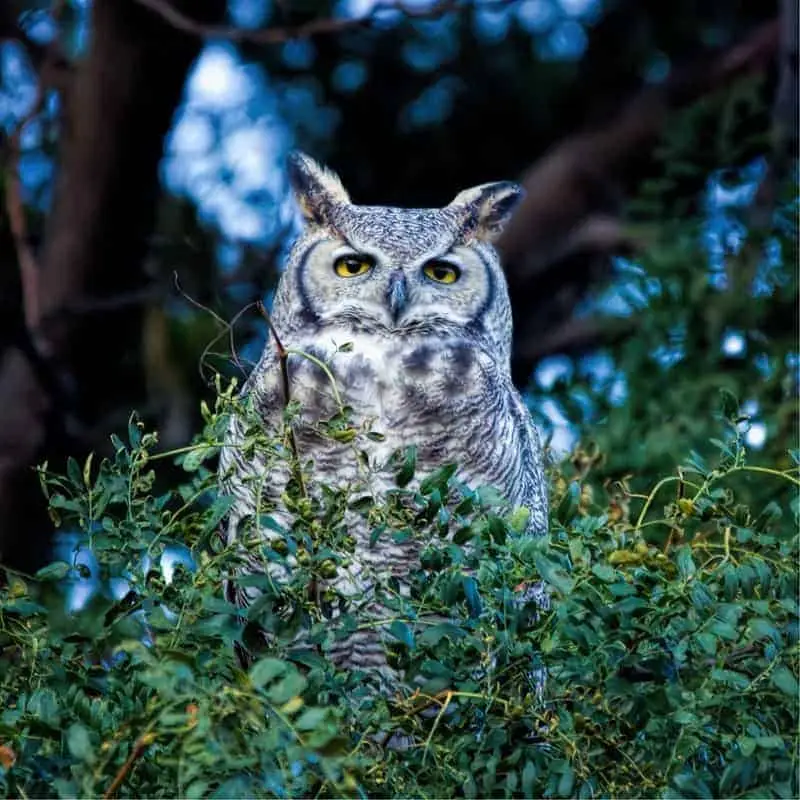
Wingspan
~140cm
Weight
1.4 kg
Life Expectancy
28 years old
Diet
Squirrels, Rabbits & Skunks
This owl has long pointed ears that look like horns, which is where it gets its name from.
They have feathers that are thick and greyish brown in colour and their body is large in size for an owl.
Great Horned Owls will form long term breeding pairs and a lot of the time these pairs will stay close to each other outside of the breeding season.
They remain monogamous during mating seasons and males will stay to help the females raise the brood.
Both members of the breeding pair are very territorial and will defend their territory with a series of sharp hoots.
Individuals have been known to kill members of their species that stray too close to their nests.
Different bird species, such as crows, will also harass these birds in an attempt to get them to abandon their nests and their eggs.
These owls have the widest range of all the owls we have looked at and this range includes the state of Maryland.
They can be seen in all areas of the state and can be seen throughout the year.
Most of the sightings of this owl have been recorded along the eastern border of the state.
4. Northern Saw-whet Owl
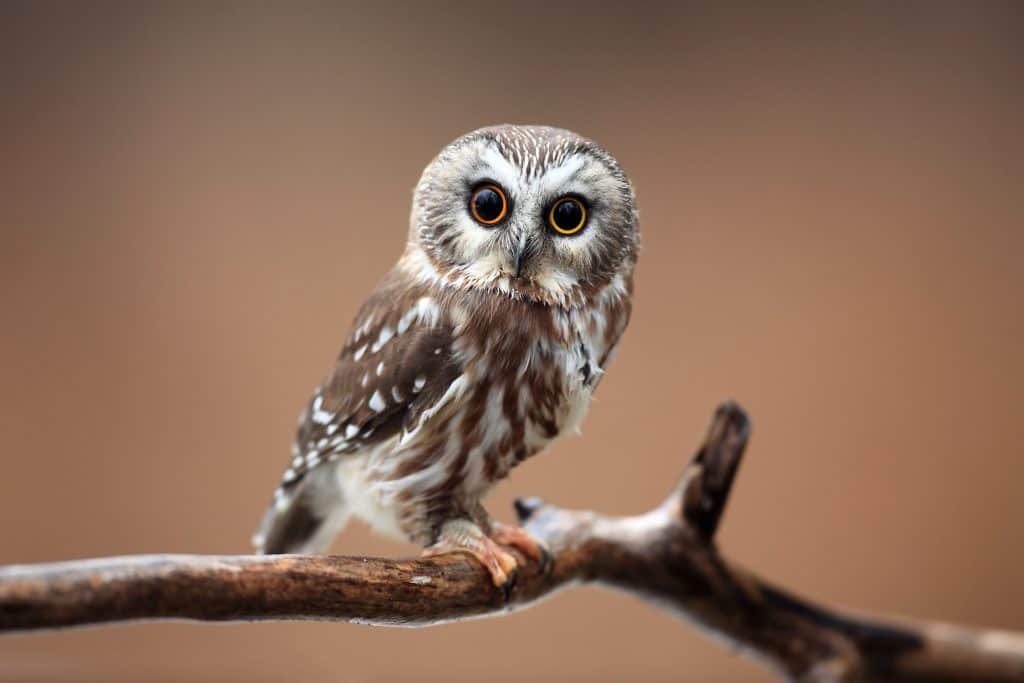
Wingspan
40 - 60 cm
Weight
100 g
Life Expectancy
7 years
Diet
Small birds, young squirrels, voles & shrews
The Northern Saw-whet Owl is very small in size for an owl and is covered in brown feathers that vary in shade.
These small owls make their nests in various forest habitats and roost throughout the day.
These birds are primarily monogamous and will form breeding pairs however there have been observed instances of males mating with multiple females.
These breeding pairs change from year to year, but they will often stay together outside of the breeding season to help each other defend their territory.
You will hear their distinct too-too-too mating call at the beginning of their mating season.
When a female enters a male’s territory, he will circle around her in flight 20 times before moving down to her and gifting her with a prey item.
They prey item is most commonly a rodent such as a lemming or a mouse.
These birds are often preyed upon by larger species of owls so have to be careful when they are hunting.
Similarly, to the short-eared Owl, these birds can only be seen in the state of Maryland outside of their breeding seasons.
Their range encompasses all of the state and most of the recorded sightings of this owl have been in the north east of the state.
5. Short-Eared Owl
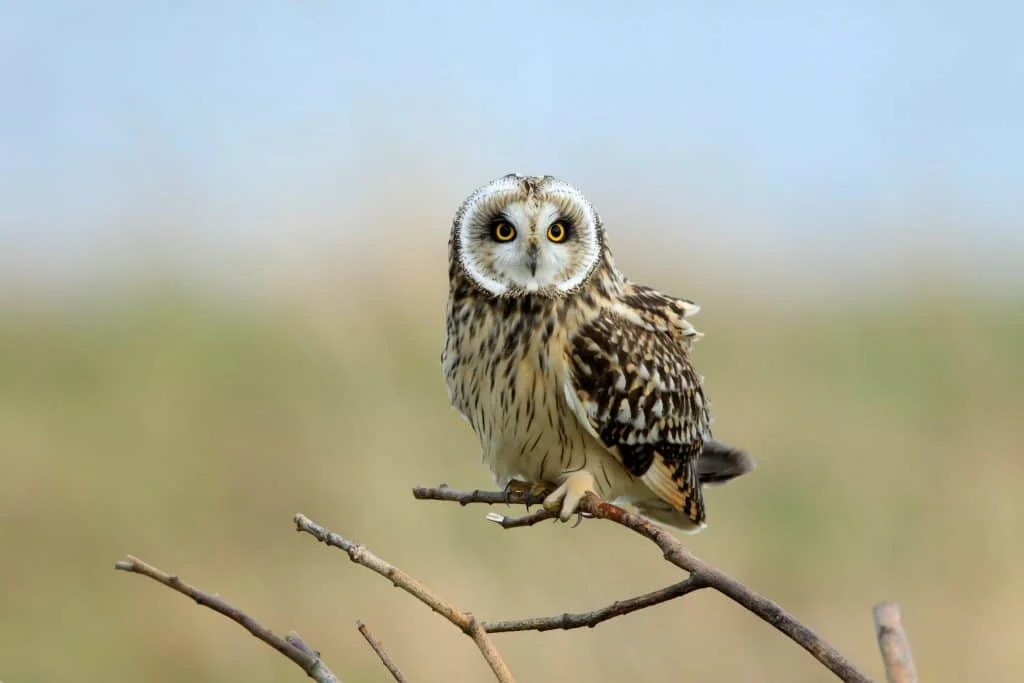
Wingspan
85 to 110 cm
Weight
206–475 g
Life Expectancy
4-12 years
Diet
Voles, Mice, Squirrels
Short-eared owls have outer ears but no visible ear tufts, which is how they got their names.
Their stocky bodies are covered in brown feathers and have patches of white.
These owls will stay in open areas of grasslands and use the minimal coverage to spot their prey.
Short-eared owls are monogamous during the breeding season, although it is unknown as to whether they form breeding pairs that are long term or if they change every year.
Breeding pairs will make their roosts on the ground in areas of tall grass, they only tend to roost in trees during the winter months especially when it is snowy.
Males will defend their territory with a series of harsh calls as well as bring food to the female whilst she is incubating the eggs.
Short-Eared Owls will often form loose colonies of lots of individuals that stay near each other throughout the year, even during the breeding season.
These owls can be seen in Maryland throughout all of the regions of the state; however, they cannot be seen year-round.
They can only be found in Maryland outside of their breeding seasons and most commonly in winter. Sightings of this owl are usually recorded in the northern areas of the state.
6. Snowy Owl
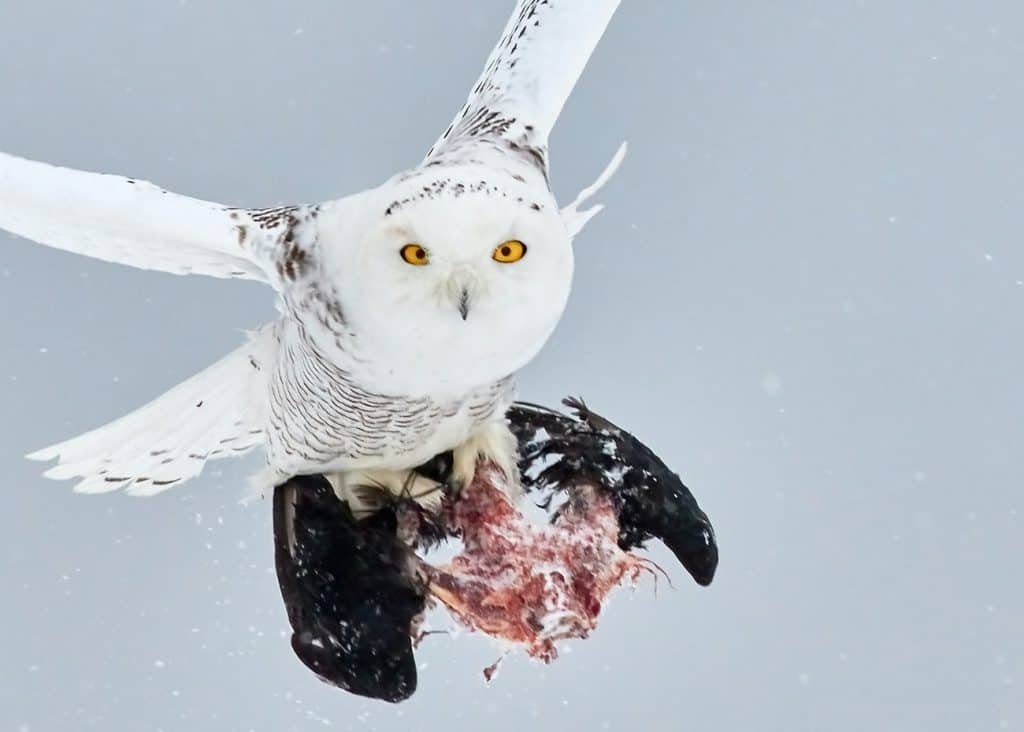
Wingspan
150 cm
Weight
2 kg
Life Expectancy
10 years
Diet
Birds, Rabbits, Fish & Rodents
The Snowy Owl is not a common resident in many states as it usually stays in more arctic and colder areas such as Canada.
These owls are medium in size and covered completely in white feathers, some of these feathers have pale grey tips.
Snowy Owls are known for being aggressive and most commonly nesting in tundra areas.
Their aggression has even been recorded with them divebombing humans that come to close and also attacking arctic wolves that are in their territory.
It appears that these owls remain monogamous but not enough information has been gathered to confirm whether they form long-term breeding pairs.
These owls have only been seen in the state of Maryland during the winter months.
Their range only extends to the northern half of the state with the most common number of sightings being recorded in the north east of the state.
7. Long Eared Owl
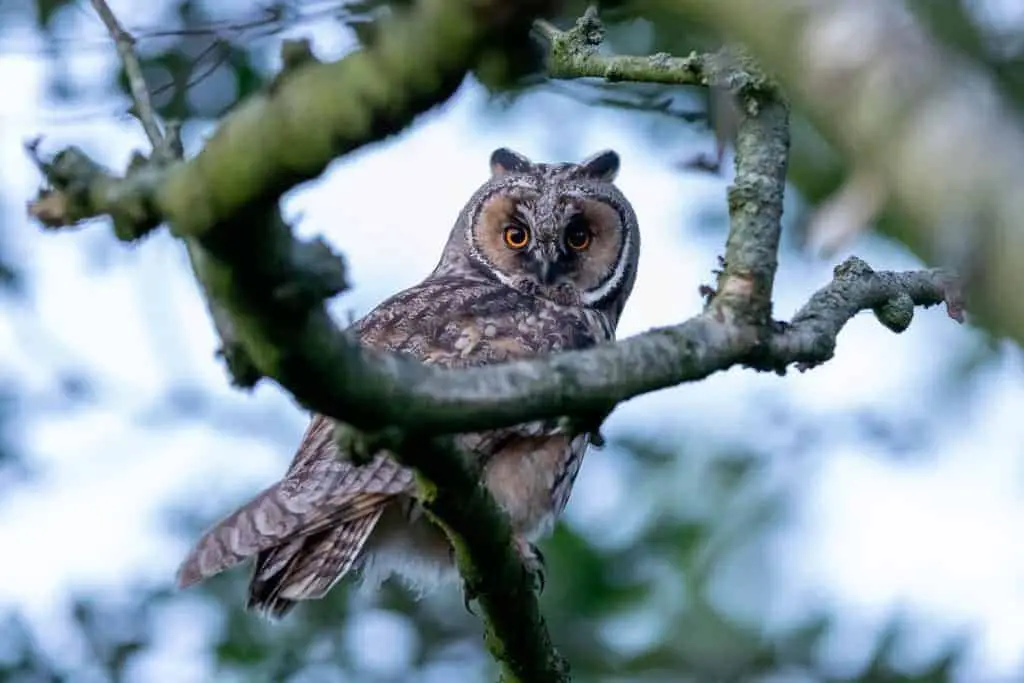
Wingspan
90 to 100cm
Weight
250 g
Life Expectancy
4 years
Diet
Small mammals, mice, rats & rabbits
As you may expect from the name, these owls have long and pointed ear tufts on the side of their heads.
Long-eared Owls can be found in a variety of areas, most commonly in coniferous and dense woodland areas.
When nesting, these birds will form loose colonies of around 50 individuals, and this will increase to 100 outside of the breeding seasons.
These birds form monogamous pairings an begin courting in late winter, before the breeding season begins.
However, it is not confirmed as to whether these pairs are long term or reform in every subsequent breeding season.
You can see these owls throughout all regions of the state; however, they are only present in Maryland outside of their breeding seasons.
Most of the sightings of this owl have been in the north east of Maryland. These birds are most active in the state during late winter.
8. Barred Owl
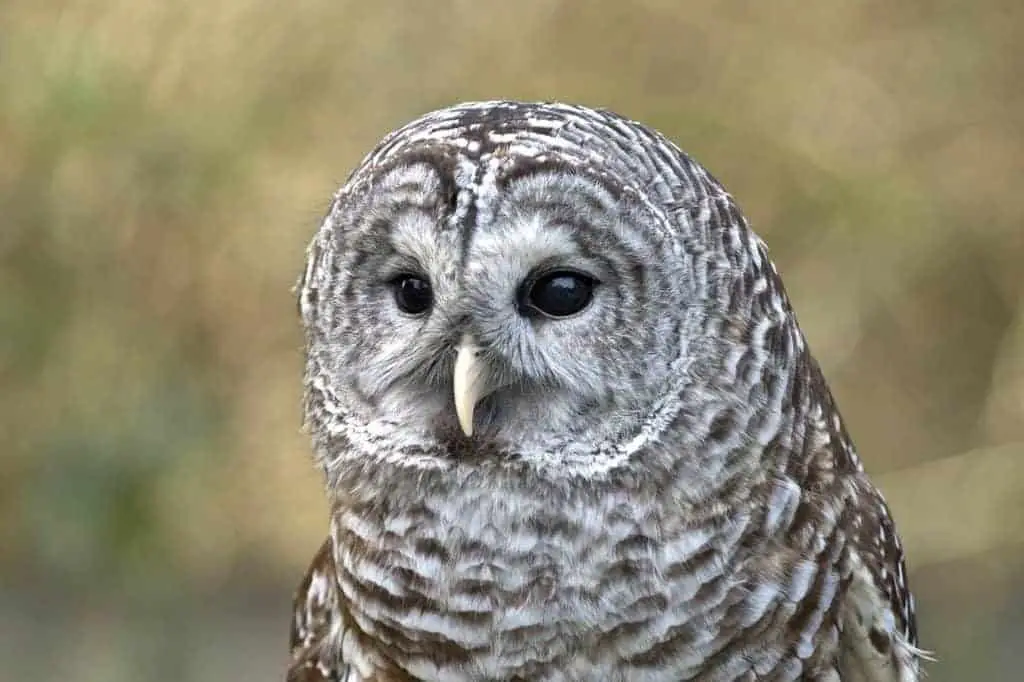
Wingspan
96-125 cm
Weight
468-1,150 g
Life Expectancy
10-23 years
Diet
Small mammals
The Barred Owl has its name because its feathers form brown and white bars across their wings and backs.
They are most commonly found in mixed woodland areas and like to stay in woods that are close to swamps and marshlands, which is where you are most likely to see them.
These owls hunt at night and spend their day roosting. They form breeding pairs during the mating season that remain monogamous to one another and both individuals are very territorial and will be defensive of their nesting areas.
It is thought that these breeding pairs are long term and they are thought to mate for life although this is not fully confirmed.
The Barred Owl can be seen in all areas of the state and are permanent residents of Maryland.
So, whilst they are most active in their breeding seasons they can be seen throughout the year. Most of the sightings of this owl have been in the northern half of the state.

More Articles.

Cardinals are one of the most beautiful birds around and are known to delight birdwatchers
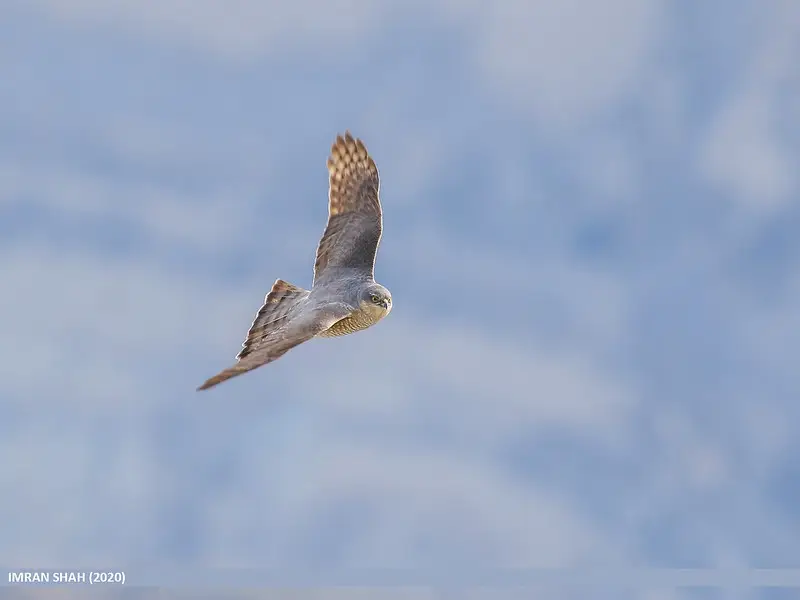
What Hawks can you see in Austria? (3 Species with Pictures & Sounds)
What Hawks can you see in Austria? There are 3 different species of Hawks that
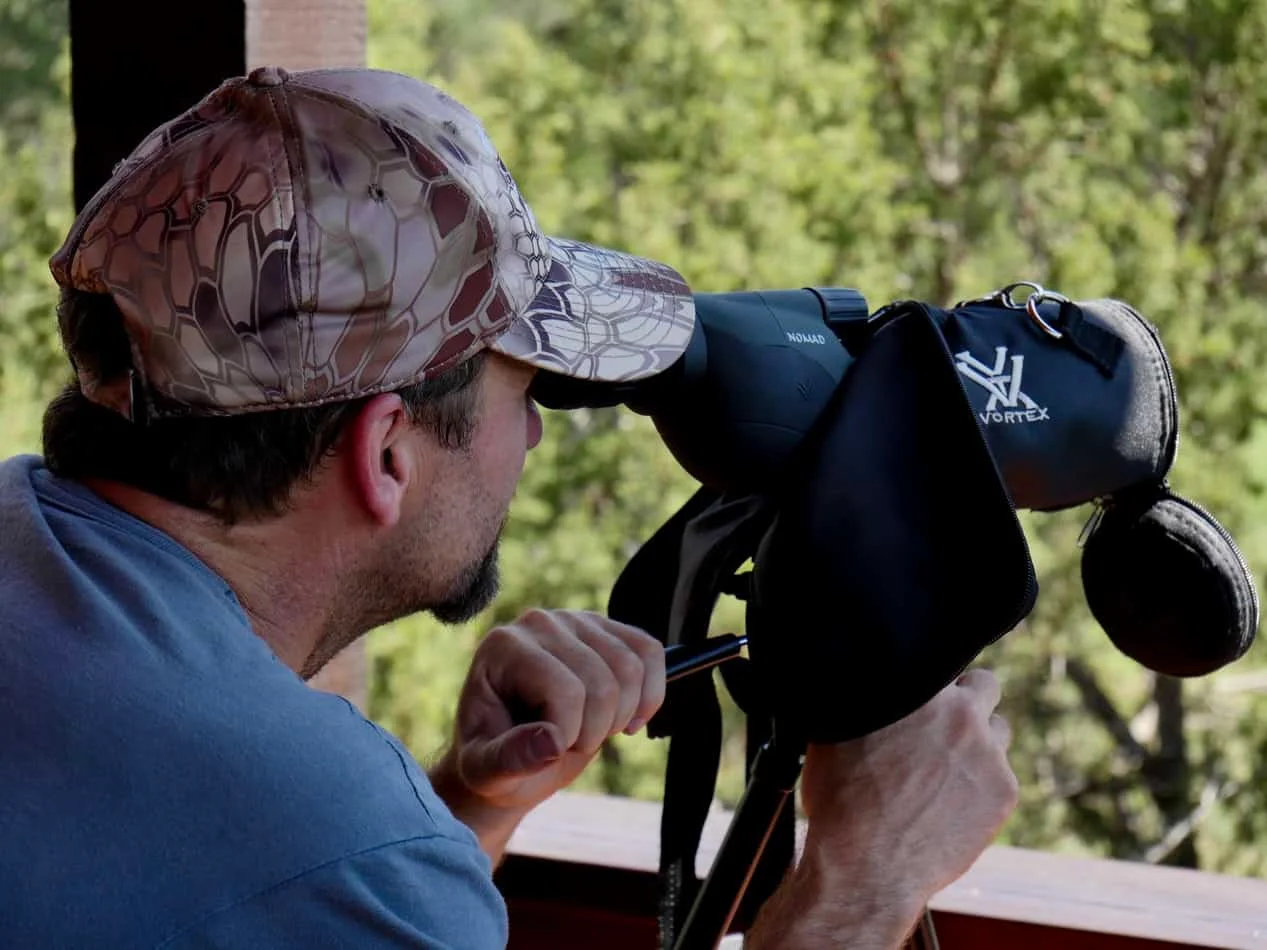
Best Spotting Scopes for Birding 2020
When it comes to birdwatching, you want to make sure that you have the right

About Us
We are avid bird-watchers who recently retired, allowing us more time to travel the world. Fortunately, we have managed to visit numerous countries around Europe, Asia, and America. Watching and photographing birds has been a passion for many years and we are making the most of the extra time on our hands!
